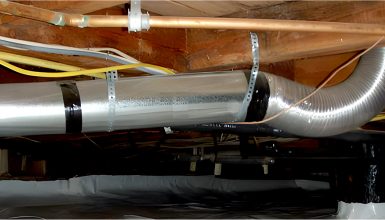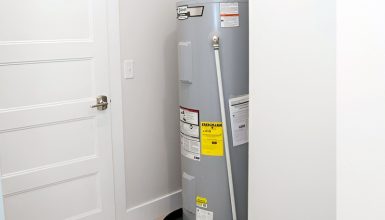Mobile homes bring unique twists when it comes to staying warm in winter and cool in summer. Unlike traditional homes, they often have thinner walls and less insulation. This means they can lose heat fast when it’s cold and get too hot quickly in summer. Because of these challenges, finding smart ways to control temperature is critical. So, let’s explore the best ways to heat and cool your mobile home.
1. Insulation Upgrades
Think of insulation as a cozy blanket for your mobile home. It’s super important. When you have good insulation in the walls, roof, and under the floor, your home stays warm in winter and cool in summer. It’s like trapping the perfect temperature inside.
Now, not all insulation is the same. For mobile homes, you want materials that fit the unique structure. Some good options are fiberglass, foam board, or reflective insulation. Fiberglass is common and affordable. The foam board is great for tight spots. Reflective insulation, like foil, works well in hot climates by bouncing back the sun’s heat.
2. Sealing and Weatherproofing
Next up, let’s stop air leaks. They can be sneaky, letting cold air in during winter and warm air in during summer. Check around your doors, windows, and where the house meets the ground. Feel for drafts or look for daylight peeking through.
To fix these leaks, use weather stripping and caulking. Weatherstripping goes around doors and windows. It’s like putting a tight seal around them. Caulking is for cracks and gaps in the structure. It’s like filling in the tiny holes where air escapes.
3. Efficient HVAC Systems
Choosing the right HVAC (Heating, Ventilation, and Air Conditioning) system is a game-changer. You need a system that’s just the right size for mobile homes. Too big, and it wastes energy. Too small, and it can’t keep up.
High-efficiency HVAC units are the way to go. They use less energy to do the same job. This means lower bills and less strain on the environment. Plus, they often work better and last longer. So, while they might cost a bit more upfront, they save you money and hassle in the long run.
4. Regular HVAC Maintenance
Keeping your HVAC system in tip-top shape is like taking your car for regular tune-ups. It makes sure everything runs smoothly and efficiently. When your system is well-maintained, it doesn’t have to work as hard to heat or cool your home. This means lower energy bills and a longer life for your HVAC.
So, what can you do? First, change or clean the filters regularly. A dirty filter makes your system work harder. Also, check your vents and ducts. Make sure they’re not blocked by furniture or dust. Once a year, it’s a good idea to have a pro look at your system. They can catch issues early and keep things running smoothly.
5. Window Treatments for Insulation
Windows can be tricky. They let in light and views but can also let in too much heat or cold. This is where thermal curtains and blinds come in. They add an extra layer of insulation to your windows. In winter, they keep the warmth in. In summer, they keep the heat out.
You can adjust them with the seasons. In winter, open them during the day to let in sunlight and close them at night to keep the heat in. In summer, do the opposite. Keep them closed during the hot day and open at night to let cooler air in.
6. Smart Thermostat Usage
Programmable thermostats are like having a smart assistant for your home’s temperature. They let you set different temperatures for different times of the day. For example, you can set it to lower the heat at work and warm up the house before you come home.
To make the most of it, think about your daily routine. Set the thermostat to lower the temperature when you need less heating or cooling. Even dropping a few degrees when you’re asleep or out can save a lot on energy bills. These smart thermostats often come with features like remote control through your phone. It’s a convenient way to manage your home’s comfort and efficiency.
7. Roof Coating Applications
Think of your mobile home’s roof like a hat in summer. You want it to reflect the sun, not soak it up. That’s what reflective roof coatings do. They’re like a shield, bouncing back the sun’s rays. This keeps your home cooler and means your air conditioning doesn’t have to work so hard. In turn, your place stays cooler, and your energy bills stay lower. Plus, it’s not just for summer. In winter, this coating also helps keep heat inside.
8. Ventilation Strategies
Fresh air in your home is like a breath of fresh air on a walk. It’s vital for good health and improves your heating and cooling systems. Ensure your home has enough vents, especially in areas like the kitchen and bathroom, where moisture and smells gather. Use exhaust fans to whisk away steam and smoke.
Also, open windows when the weather is nice to circulate fresh air. It’s a simple and natural way to refresh your home’s air. Remember, good air flow helps control humidity, which is essential for comfort and to keep mold at bay.
9. The Role of Ceiling Fans
Ceiling fans are like helpers for your HVAC system. They stir up air, making your heating and cooling more effective. In summer, set them to turn counter-clockwise. This creates a cool breeze. In winter, switch them to clockwise. This pulls cool air up and pushes warm air down, helping to distribute the heat evenly.
Using ceiling fans can allow you to set your thermostat a bit higher in summer and lower in winter, saving energy. And the gentle breeze they create can make your room feel more comfortable without changing the temperature.
10. Natural Temperature Regulation Through Landscaping
Trees and shrubs can be your mobile home’s natural allies. In summer, leafy trees provide shade, naturally cooling your home. When trees lose their leaves in winter, they let in sunlight to help warm your home. Planting trees on the south and west sides can be especially effective.
Shrubs and bushes can also act as windbreaks, protecting your home from cold winter winds. Think of landscaping as an extra layer of insulation that adds beauty to your home. It’s a win-win for comfort and curb appeal.

















